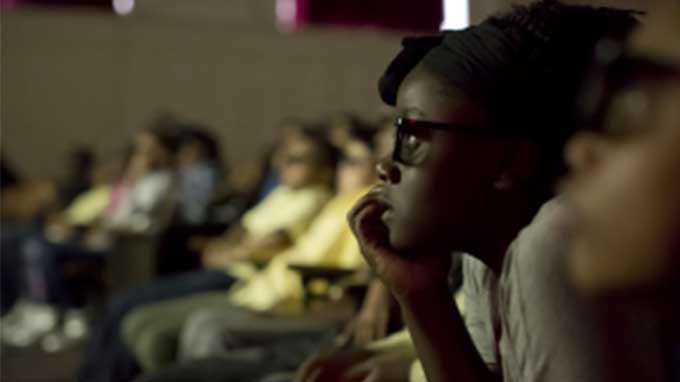Research In Action
Research In Action
Breadcrumb

The term “edutainment” has risen to prominence over the past two decades to describe the merging of education and entertainment to positively impact the lives of children and adolescents. Also over the past two decades, our team of bullying prevention experts at Children’s Hospital of Philadelphia (CHOP) has worked with administrators, teachers, and staff at schools throughout the School District of Philadelphia to implement school-based programming aimed at reducing bullying, particularly relational aggression among girls.
Our team had the unique opportunity to explore a new paradigm – scientific edutainment – in which bullying prevention researchers from CHOP partnered with an international technology team to create a multimedia bullying prevention experience for middle school students, called Free2B. The development of Free2B, detailed in a study published this month in Frontiers in Psychiatry, demonstrates how combining best practice science, strong psychological theory, and the latest in entertainment technology can improve educational interventions.
Program Development
Because bullying peaks in middle school, we sought to create an intervention appropriate for students in 6th, 7th, and 8th grades, with an emphasis on a community-based participatory research (CBPR) approach that would ensure the program had global relevance and was also engaging for youth in urban schools.
Each partner brought particular expertise to the collaboration: Our research team had experience in program design and methodology, as well as knowledge of best practice strategies for bullying prevention programming. The technology team had strengths in developing 3D experiences related to educational topics, in addition to experience developing and scaling programming through an assembly-style format. Our common goal was to develop a 90-minute multimedia bullying prevention experience grounded in best practice science and relevant psychological theory.
Researchers developed the program theory and primary teaching content, consulted with a local youth advisory group, and developed evaluation procedures. As program materials were being developed, the need emerged for a document outlining the most important concepts and key teaching points. This helped articulate the main constructs and take-away messages that needed to be covered in one or multiple components of the intervention in a scientifically-grounded manner.
On their end, the technology team laid out production time-tables and the detailed type of feedback the technologists required from the research team for iteratively developing components of the program, such as drafting of scripts, story-boarding, focus group feedback, and production schedules.
The program was developed and refined via several pilot studies, where nearly 2,000 students in urban and suburban middle schools experienced Free2B and provided feedback. Across these pilot studies, the vast majority of youth (over 80%) found the programming to be enjoyable, relevant to the issues they were facing, and helpful in teaching them strategies to prevent bullying.
The Value of Scientific Edutainment
Our team’s experience in developing Free2B revealed the strengths of the scientific edutainment paradigm. The multidisciplinary partnership between our research team and technologists resulted in a program that was both entertaining and scientifically rigorous. This approach addresses a gap in the field of bullying prevention for middle schoolers: how to utilize the assembly-style format that is less time and resource-intensive for schools, in a way that is theoretically-grounded, data-driven, and designed to provide clear strategies for bullying prevention without glorifying violence or inducing fear in youth.
While we know that any one-time experience is unlikely to reduce bullying alone, Free2B and similar programs developed through a scientific edutainment process can serve as an important and effective springboard for schools to promote and maintain an anti-bullying climate. Further, this study highlights how cutting-edge technology and best practice science can be integrated to provide an engaging social and emotional learning experience.

